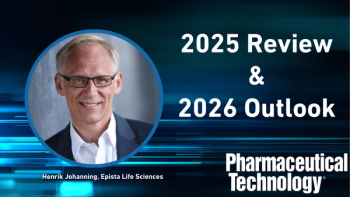
FDA to Undergo Transformation, Expand Borders
With another potential "made-in-China" crisis looming over the recall of heparin, critics and the media seem to be waiting in line to take another jab at the US Food and Drug Administration.
Washington, DC (Feb. 29)-With another potential “made-in-China” crisis looming over the recall of heparin, critics and the media seem to be waiting in line to take another jab at the US Food and Drug Administration. Rather than hiding behind FDA’s doors, Commissioner Andrew von Eschenbach took the opportunity to talk to the National Press Club last Friday. In a speech titled “FDA at a Turning Point: Meeting the Challenge of a Rapidly Changing World,” Von Eschenbach addressed head on FDA’s faults and what’s needed to “re-create” the agency.
“Changes in our world are affecting every single American in terms of our health and well-being,” he told the audience. “Change is affecting everything from the food we eat to the drugs and medical devices we depend upon. These changes are impacting the Food and Drug Administration and our ability to continue to fulfill our mission to protect and promote the health of every single American.”
The Commissioner discussed how advances in science and technology, along with transportation, information, and globalization, have impacted health. “The simple truth as I see it today is that the FDA of the 20th century is not adequate to regulate the food and drugs of the 21st century.”
He went on to describe the larger-than-life agenda set before the agency, whose staff and resources continue to be overloaded and underfunded. The American public sometimes forgets that FDA is in charge of regulating nearly all the food we eat, vitamins and dietary supplements, all types of medical products from aspirin and biologics to cardiac pacemakers and surgical masks, radiation-emitting equipment such a microwaves, cosmetics, and typical drugstore items such as toothpaste and deodorant. This list doesn’t even include the products FDA regulates for animals such as products from pet food.
To keep up this work in an efficient manner and meet growing demands, Von Eschenbach outlined a five-step transformation the agency has gone through-and will continue to go through-over the past two years. These steps are outlined below.
- Focus on the priority areas, including issues of drug safety, food protection, the scientific foundation for regulatory decisions, work force development, and essential infrastructure including facilities and information technologies.
- Use a disciplined process for problem assessments and interventions.
- Develop implementation plans for each of these strategic initiatives. One such plan, Response to the IOM Drug Safety report, was issued last year and some of its initiatives already have been implemented, such as the creation of a Risk Communication Advisory Committee. A new initiative called Safety First was launched last week to address processes for multidisciplinary determination of risk.
- Continue a series of external and internal consultations to assess work force numbers and skill sets. The agency plans to hire 700 new employees this year and will be launching a two-year FDA Fellowship training program for as many as 2000 individuals. Related projects include a $250 million information technology infrastructure project and new integrated data center.
- Change policy. “FDA can no longer be simply a gatekeeper assessing benefit and risk before allowing a product to be delivered to patients or the public, or to rely solely on inspections to verify quality,” said Von Eschenbach. “It must engage in the Total Life Cycle of the product…. Engaging in stages of discovery, development and delivery of products we regulate will enable us to better assure quality.” Targeting the delivery end of the life cycle, a program called the Sentinel Initiative will soon serve to improve collaboration between public and private partners to create a nationwide system that will allow FDA to analyze large databases about “the safety of medical products as they are used by large diverse populations.”
In further collaborative efforts, Von Eschenbach discussed a new “FDA beyond our Borders” program. This effort is meant to give the agency a greater presence and capacity abroad, starting with China. Four other regions will be targeted as well: India, the Middle East, Central America, and South America. The initiative will allow FDA to “regulate products where they are produced, before they arrive at our borders,” by expanding interaction with foreign regulators, among other things, he said. The same life-cycle approach will be applied to imported products with a focus on new products and high-risk products.
The work of the US Working Group on Import Safety, chaired by Health and Human Services Secretary Mike Leavitt, played a role in the “beyond borders” program idea. The working group was established last spring after several reports of contamination were tied to products made in China.
All of these efforts are meant to “re-create” and improve the agency in a way that “enhances discovery, development and delivery of lifesaving products,” Von Eshenbach said in his closing remarks. “I am aware of the need for radical and rapid change.”
Read Von Eschenbach’s
Newsletter
Get the essential updates shaping the future of pharma manufacturing and compliance—subscribe today to Pharmaceutical Technology and never miss a breakthrough.




